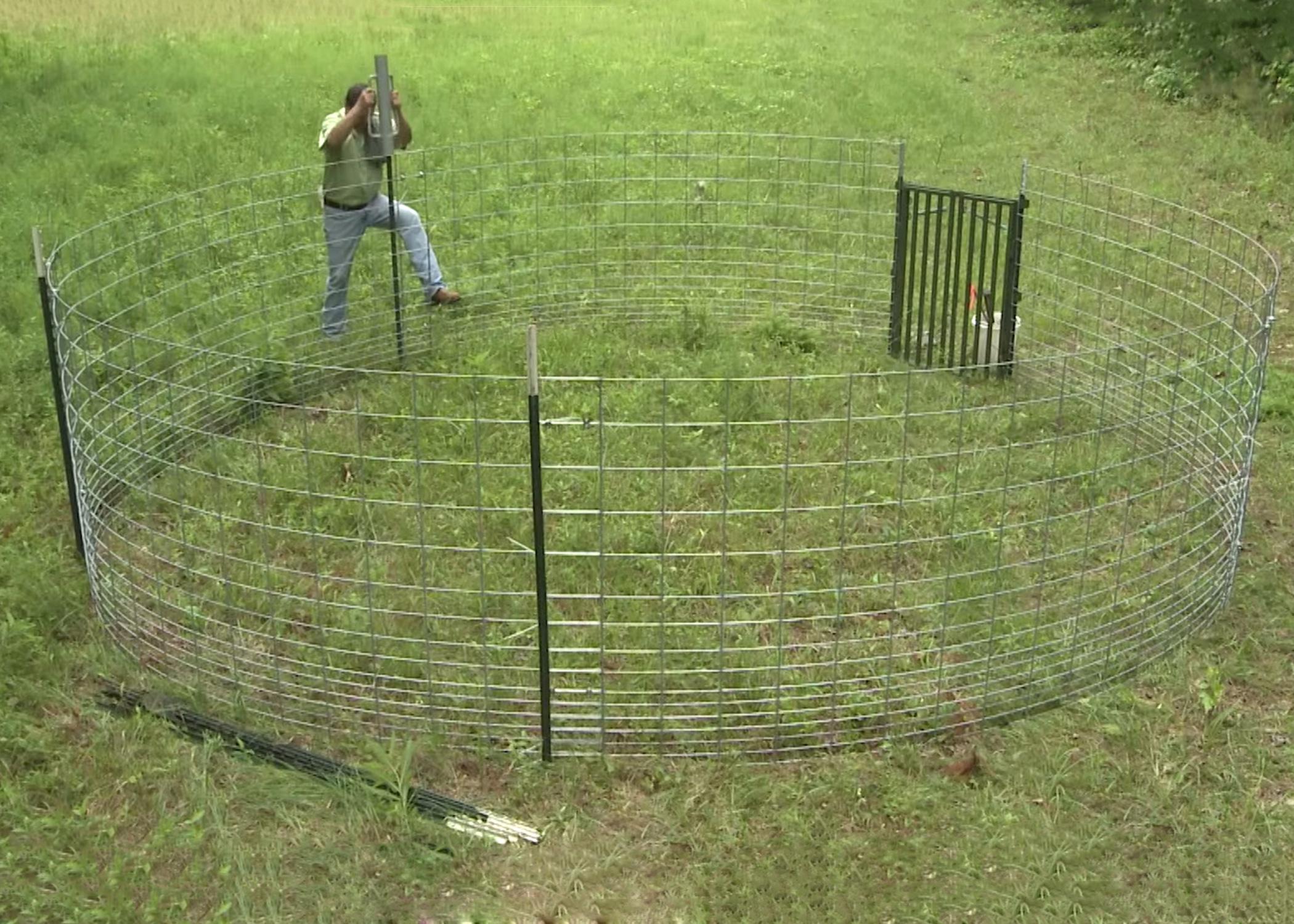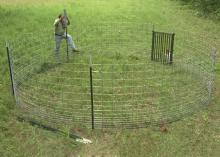Information Possibly Outdated
The information presented on this page was originally released on October 28, 2014. It may not be outdated, but please search our site for more current information. If you plan to quote or reference this information in a publication, please check with the Extension specialist or author before proceeding.
Trapping is best wild pig control method
RAYMOND -- Many Mississippians enjoy the sport of hunting wild pigs, but trapping is a better way to control the rapidly growing population that is destroying forests, damaging agricultural resources and threatening native wildlife in the state.
“Population studies by scientists show that hunting only removes about 25 percent of the population on average,” said Bill Hamrick, a wildlife associate with the Mississippi State University Extension Service and the Forest and Wildlife Research Center. “To keep the number of pigs from growing, we need to remove at least 50 percent of the population, and in some cases, as much as 70 percent, depending on an area’s available resources.”
In the Delta, where pigs have a lot of food sources, landowners and farmers should aim to remove at least 70 percent of the population, Hamrick said. In areas where resources are less plentiful, such as south Mississippi or the Piney Woods region, removing 50 percent of the pigs may be enough to keep the population stable.
Traps can remove a greater number of pigs from an area at once, he said. Traps also require less time and effort than other removal methods, such as hunting or exclusion fencing.
A corral trap is best for capturing and removing large sounders, or herds of pigs, Hamrick said. These traps can be built easily with off-the-shelf materials. Before setting up a trap, scout the property and prebait suspected high-use areas. Set up game cameras to determine size of the sounder, whether more than one group is present, and the best spot for the trap.
“It could take a couple of weeks to determine the best location for the trap,” he said. “Pigs will sometimes move through an area and not come back for a little while or at all. It just depends on what food is there to keep them coming back.”
Hamrick suggests euthanizing and burying trapped pigs or dressing them for meat. Wild pigs can carry diseases that are transmissible to humans and other animals, so safe handling is important.
“Whether hunting or trapping, it’s important to take proper precautions when working with wild pigs,” Hamrick said. “Always wear latex or vinyl gloves and don’t touch your eyes, nose, mouth or open wounds. If the pigs will be eaten, it is important to clean them properly and cook them well.”
Wildlife experts estimate the economic impact of wild pig damage and control is $1.5 billion per year nationwide.
“That is a conservative estimate,” said Marina Denny, a research associate with the MSU Forest and Wildlife Research Center who is studying the economic impact of wild pig damage in Mississippi.
Denny will survey landowners and farmers in the state to get specific information about the costs associated with damage to crops, forestland, pastures, farm structures and other property.
“The information we gather can also help us at MSU determine better management practices by focusing our research and outreach efforts,” Denny said. “We will also be able to provide lawmakers with concrete information that can help them decide how to legislate control methods.”
The study is made possible through a two-year grant from the Land, Water and Timber Resources Board of the Mississippi Department of Agriculture, with support from the MSU Extension Service.
For instructions on how to build a corral trap, view the YouTube video here: https://www.youtube.com/channel/UCpJw6pQu4L5sVwknzSfx07A.
For more information about control and safe handling of wild pigs, visit http://wildpiginfo.msstate.edu/.





